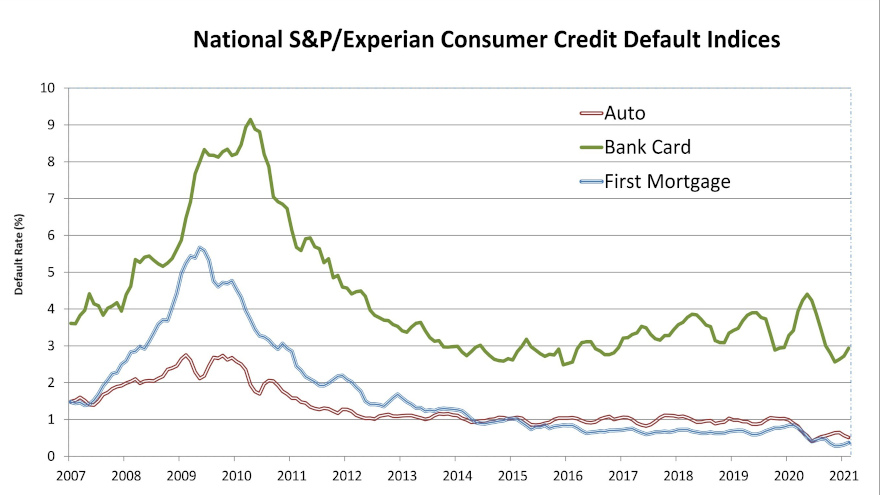Counter to other credit segments, auto defaults drop for second straight month

Chart courtesy of S&P Dow Jones Indices and Experian.
By subscribing, you agree to receive communications from Auto Remarketing and our partners in accordance with our Privacy Policy. We may share your information with select partners and sponsors who may contact you about their products and services. You may unsubscribe at any time.
NEW YORK –
It probably wouldn’t be surprising if finance company executives and managers looked at the latest auto default reading from S&P Dow Jones Indices and Experian and responded by saying, “What? Wait a second. Really?”
According to data through February for the S&P/Experian Consumer Credit Default Indices, auto defaults dropped for the second month in a row to settle at 0.51%. That’s five basis points lower than January and 13 basis points below December’s reading.
And the February mark is beginning to approach the neighborhood of the all-time low registered in June, when analysts pegged it 0.40%.
What about past February readings before the pandemic began to influence so much in the credit world? Glad you asked. According to past data from S&P Dow Jones Indices and Experian, auto defaults during the second month of the year were as follows:
2020: 0.89%
2019: 0.99%
2018: 1.09%
2017: 1.05%
2016: 1.06%
2015: 1.06%
2014: 1.03%
2013: 1.11%
2012: 1.22%
2011: 1.58%
Turning back to the newest information, analysts reported the composite rate — a comprehensive measure of changes in consumer credit defaults — moved counter to the auto segment, rising 5 basis points at 0.53%.
Subscribe to Auto Remarketing to stay informed and stay ahead.
By subscribing, you agree to receive communications from Auto Remarketing and our partners in accordance with our Privacy Policy. We may share your information with select partners and sponsors who may contact you about their products and services. You may unsubscribe at any time.
Analysts also discovered the bank card default rate rose 21 basis points to 2.93%, while the first mortgage default rate climbed five basis points to 0.37%.
Finally, all five of the major metropolitan areas that analysts track for the monthly report rose in February.
New York generated the highest increase, climbing 34 basis points to 0.83%, while Miami rose 21 basis points to 1.16%.
Los Angeles jumped by 12 basis points to land at 0.44%.
Analysts said Chicago and Dallas each edged up 2 basis points, to 0.55% and 0.59%, respectively.
Jointly developed by S&P Indices and Experian, analysts noted the S&P/Experian Consumer Credit Default Indices are published monthly with the intent to accurately track the default experience of consumer balances in four key loan categories: auto, bankcard, first mortgage lien and second mortgage lien.
The indices are calculated based on data extracted from Experian’s consumer credit database. This database is populated with individual consumer loan and payment data submitted by lenders to Experian every month.
Experian’s base of data contributors includes leading banks and mortgage companies and covers approximately $11 trillion in outstanding loans sourced from 11,500 lenders.


